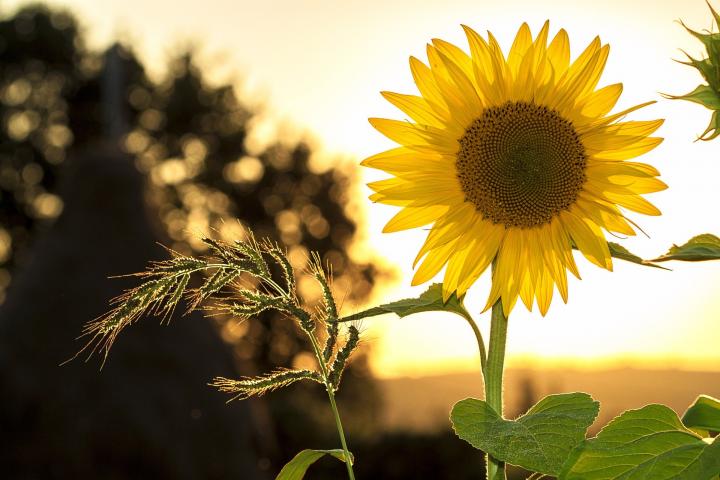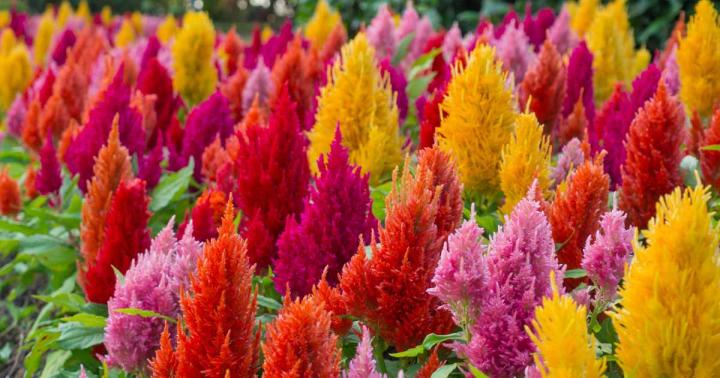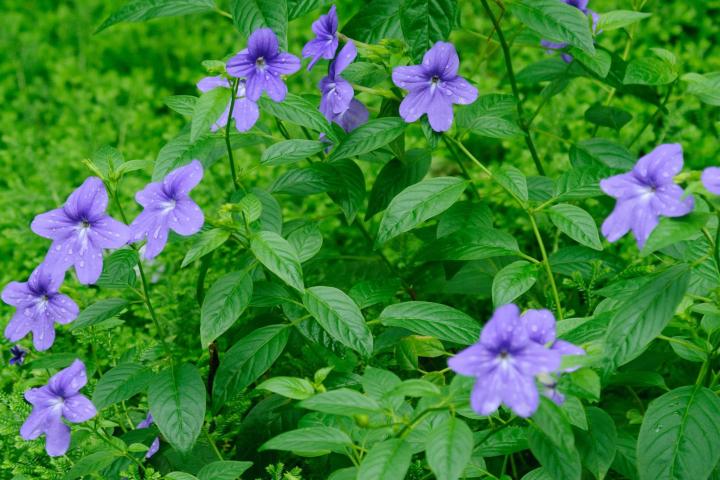
What's the point of annual flowers? An annual debate!
The Almanac Garden Planner - Use It Free for 7 Days!
Plan your 2025 garden with our award-winning Garden Planner.

Getting Started with Flower Gardening
Building a Raised Flower Bed Garden
Choosing Flowers
Types of Flower Gardens
Flower Gardening for Pollinators
Growing Flowers in Containers
Spring and Fall Bulbs
Caring for Flowers
ADVERTISEMENT
Nice looking mammoth Amaranth plants~
I've personally never seen people reject annuals, but I suppose some do. More homes here in WNY plant with annuals than attempt perennials. There's a good mix of both, though, and I agree: that's the way to go. People new to perennials might not realize that some of them only last a few years. You need to check what you buy. And of course, bloom time during the season, required conditions and what the foliage looks like after bloom - some need to be hidden if the greenery gets brown before the rest of the garden fades in late fall. Annuals are great way to do that, plus they are dependable color all season, blooming nearly constantly, with few exceptions (and some just take a break during the hottest couple weeks, then bloom again). And, sadly, but all gardeners know: sometimes a perennial doesn't make it through the winter and we try again or try something new. I keep front space in my garden for annuals and fill the rest with perennials, plus some seeds to slow-grow and give me more color come August. Zinnias, gomphrena are great for that. Gardens are for fun, relaxation, experimentation. Mix it up, try your luck and see what works for you!
Gardening and being outside to absorb some sunlight--- and breathe fresh air--- and get one's hands in delightfully aromatic microbiome-rich soil is good for body, soul, and spirit! For those w/out yards, so is "even" just spreading some newspapers on a kitchen floor and playing with a bag of organic potting soil, some clay pots, and and an assortment of geraniums, ferns, ivies, and herbs for the windowsills! As long as nurseries provide a means for customers to observe distancing (in the same way groceries have been advised to) I hope they will be encouraged to remain open!
My Saliva come back every year. I live in zone 8B. I love them, and so do the bees, butterfly, and hummingbirds.
I appreciate your articles, Robin! I always get something helpful and interesting from them and end up reading them until the end. Thanks for faithfully contributing them.
Just wondering how you think the nurseries will make out in these uncertain times. I feel that they are an essential business but not necessarily life sustaining. I live in an area with tons of little mom and pop greenhouses. I do hope that by the time we are allowed to go out we will still be in time to plant annuals and the nurseries will be ready for us. But what if....


































